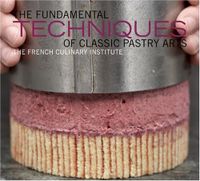Advertisement
Pains et Viennoiseries
An Overview of Breads and Pastries
Appears in
Bread baking is one of the oldest kitchen crafts, with some type of grain-and-water mix being a source of basic sustenance for thousands of years. From the Stone Age, when cooks made hard cakes from ground barley and water, through biblical references (including the oft-quoted “loaves and fishes” and the still-celebrated unleavened bread of the Exodus of the Israelites), to the sweet, soft, presliced white bread of mid-twentieth-century America—and even on to the contemporary revival of artisanal baking, bread has remained the staff of life for the world’s population. Loaves have been found in Egyptian tombs and, in fact, the remains of some 5,000-year-old loaves can still be seen in the Egyptian galleries of the British Museum and other museums. Archeologists have also located bakeries in the remains of long-buried cities such as Pompeii. So important were the bread bakers of the region that, by 168 B.C., they had formed their own guild in Rome, a guild of craftsmen that still exists today.

